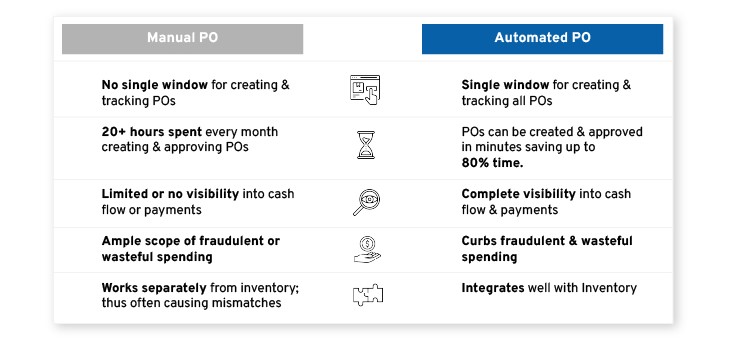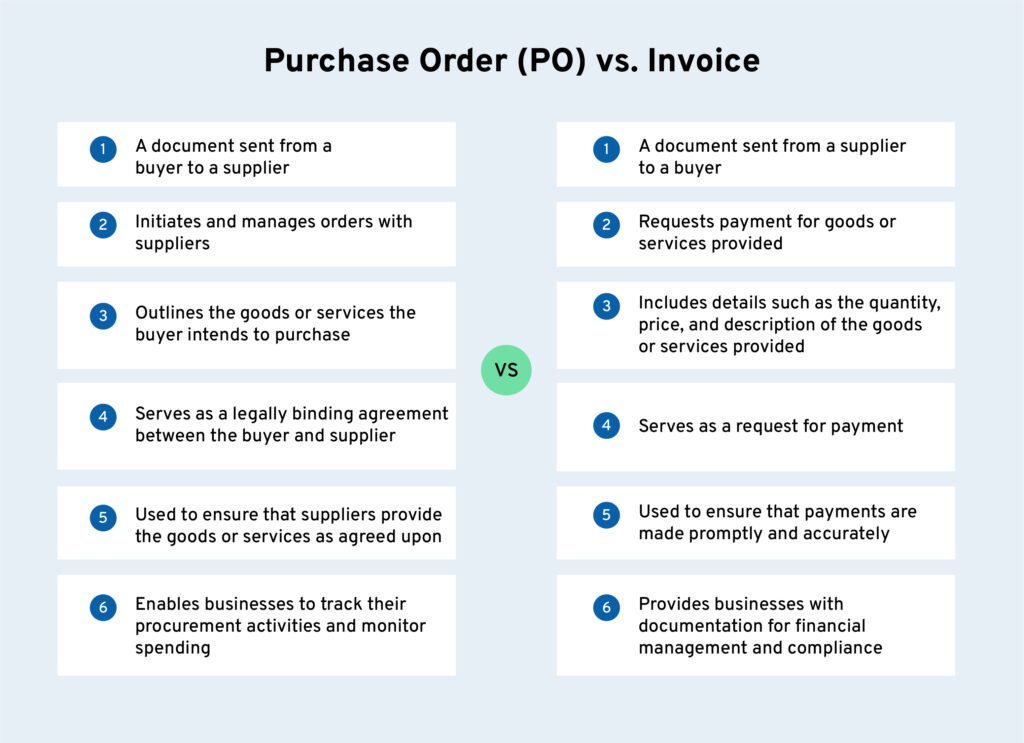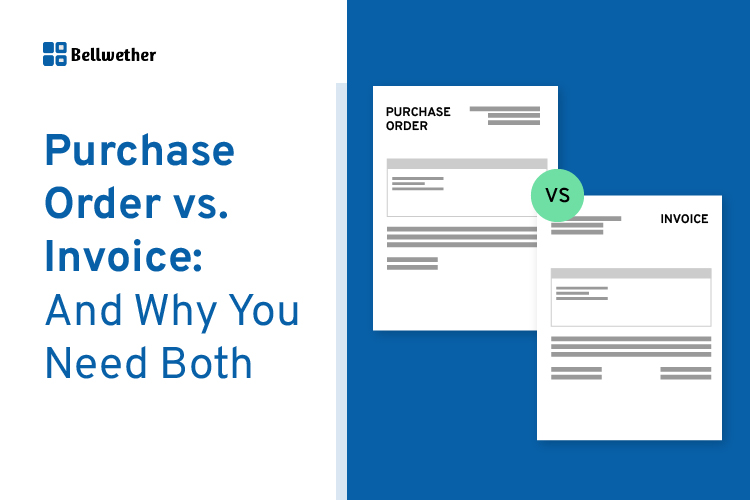For any organization, purchase orders (POs) and invoices are two critical documents that serve different purposes. While purchase orders are used to initiate and manage orders with suppliers, invoices are used to request payment for goods or services provided.
Businesses need both documents to manage their procurement functions and processes effectively. Let’s look at the difference between them and illustrate why both are crucial in streamlining your workflows.
Purchase Order vs Invoice
Let’s have a clear understanding of what is a PO and an invoice, what is the difference between the two and yet, why they are both equally essential for your business.
But before we jump into that, it is worth noting that we will be mostly covering them in the context of automated systems. If you don’t know much about the differences between manual and automated systems, here’s a quick primer:

What is a Purchase Order?
A purchase order is a document sent from a buyer to a supplier that outlines the goods or services the buyer intends to purchase. It includes details such as the vendor, ship-to code, delivery date, quantity, and price. A PO is used to initiate and manage orders with suppliers and serves as a legally binding agreement between the buyer and supplier.
What is an Invoice?
On the other hand, an invoice is a document sent from a supplier to a buyer requesting payment for goods or services that have been provided. An invoice typically includes additional details such as packing slip, invoice date, taxes, and freight. It serves as a request for payment and includes payment terms such as the due date and accepted payment methods.
Below Is an overview of the key differences between a PO and an Invoice.

Similarities Between Purchase Orders & Invoices
While purchase orders (POs) and invoices serve different purposes in the procurement process, they do share some similarities.
- Purchase orders and invoices both include information about the items being bought, such as the quantity, price, and description.
- Purchase orders and invoices both provide businesses with documentation for financial management and compliance.
- Both documents enable businesses to track their procurement activities, monitor spending, and ensure that procurement activities are conducted in a compliant and ethical manner.
- Finally, both these documents are legally binding.
Why do you need both Purchase Orders and Invoices?
Purchase orders and invoices are both critical to the procurement process in your organization, and you need both to manage procurement effectively. Here are some reasons why:
- Purchase orders help manage orders
POs are used to initiate and manage orders with suppliers. They provide clear instructions to your suppliers about the goods or services that are required, the quantity, and delivery details. POs also enable your buyers to track orders and ensure that they are fulfilled as per the agreed-upon terms.
- Invoices ensure accurate payment
Invoices are used to request payment for goods or services provided. They provide a detailed breakdown of the goods or services provided, the quantity, price, and payment terms. Invoices help ensure that your buyer is paying the correct amount for the goods or services received, and they also enable the buyer to reconcile their accounts payable records.
- POs and invoices help manage cash flow
By using both POs and invoices together, your company can manage its cash flow more effectively. POs allow your buyers to forecast their future cash requirements accurately, while invoices provide a clear record of the payments that need to be made.
- Purchase orders and invoices help manage relationships
POs and invoices are important tools for managing relationships with your suppliers. By using POs, buyers can ensure that suppliers are fulfilling their orders as per the agreed-upon terms, while invoices enable suppliers to request timely payments for the goods or services they have provided.
Conclusion
In conclusion, POs and invoices are requisite for every organization. They are two key documents in the procurement process that are necessary for the smooth functioning of procurement activities in your organization.
By understanding the differences and similarities between purchase orders and invoices, businesses can effectively manage their procurement activities and ensure that payments are made accurately and promptly.
With Bellwether’s procurement software, you’ll enjoy a complete procure-to-pay (P2P) package which makes it easy to create a PO and raise an invoice to finally complete your purchasing process. Make your procurement journey seamless and efficient with Bellwether. Contact us.







